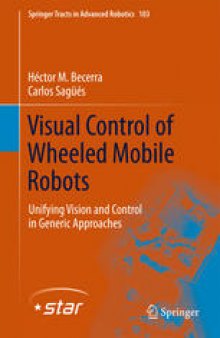 جزییات کتاب
جزییات کتاب
Vision-based control of wheeled mobile robots is an interesting field of research from a scientific and even social point of view due to its potential applicability. This book presents a formal treatment of some aspects of control theory applied to the problem of vision-based pose regulation of wheeled mobile robots. In this problem, the robot has to reach a desired position and orientation, which are specified by a target image. It is faced in such a way that vision and control are unified to achieve stability of the closed loop, a large region of convergence, without local minima and good robustness against parametric uncertainty. Three different control schemes that rely on monocular vision as unique sensor are presented and evaluated experimentally. A common benefit of these approaches is that they are valid for imaging systems obeying approximately a central projection model, e.g., conventional cameras, catadioptric systems and some fisheye cameras. Thus, the presented control schemes are generic approaches. A minimum set of visual measurements, integrated in adequate task functions, are taken from a geometric constraint imposed between corresponding image features. Particularly, the epipolar geometry and the trifocal tensor are exploited since they can be used for generic scenes. A detailed experimental evaluation is presented for each control scheme.



 دانلود کتاب
دانلود کتاب

 جزییات کتاب
جزییات کتاب




 این کتاب رو مطالعه کردید؟ نظر شما چیست؟
این کتاب رو مطالعه کردید؟ نظر شما چیست؟
